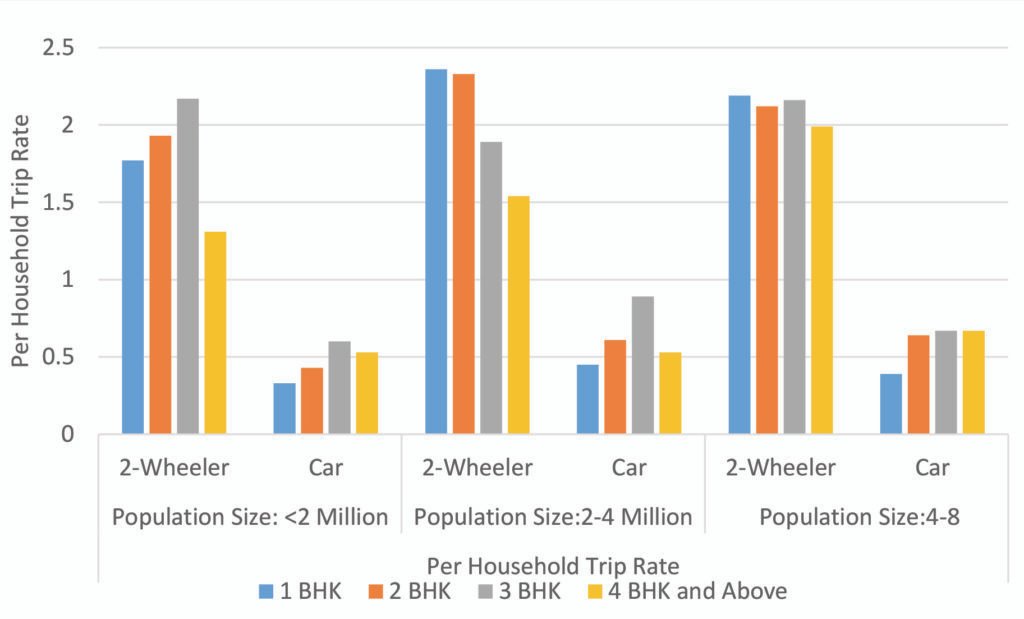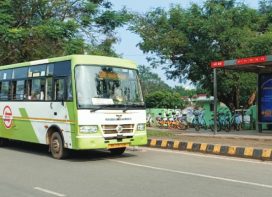The Government of India has implemented several initiatives to enhance core infrastructure and improve the quality of mobility, accurate estimation of trip rates is crucial for effectively predicting motorized and non-motorized vehicular traffic in India and proposing appropriate policy and infrastructure guidelines, write Prof. Manoranjan Parida, Director, CSIR-Central Road Research Institute and Dr. Ch. Ravi Sekhar, Chief Scientist & Head TPE, CRRI

Household passenger trip rates refer to the number of trips taken by a household in certain period (day/week). These trip rates can vary depending on various factors such as number of household members, their age, gender, land use, purpose of trip etc.
Trip Generation is the initial stage of the four-stage transportation planning process. These four stages include trip generation, trip distribution, mode choice and trip assignment. Trip assignment plays a vital role in determining the impact of land use developments. However, existing studies in India primarily focus on purpose-driven trips and incorporate limited explanatory variables in model development. As a result, these models exhibit poor prediction accuracy, leading to underestimation or overestimation of traffic.
It is important to note that, to date, no manual or guideline exists in the country for the ready-made estimation of trips based on evolved per capita trip rates across various modes. Recognizing this research gap, the development of a systematic approach based on Per Capita Trip Rates (PCTR) specific to Indian cities becomes crucial. Such an approach would ultimately facilitate the evolution of suitable Transport Demand Management (TDM) policies.
Overview on Existing Manuals
The ITE Trip Generation Manual, 10th edition (2017), provides nationally collected trip generation data, but its usefulness is limited as it may not accurately represent all geographic areas and land use variations. To address this issue, some states and municipalities in the USA have conducted their own trip generation studies to obtain local and regional data, which offer more accurate estimates for trip generation within their respective areas.
Department of Transportation (2012), presents an analysis of trip generation in an emirate. The manual categorizes the emirate into different types of areas such as CBD, Non-CBD, and others. It further classifies the land use into nine major types with sub-classifications using a three-digit code. The manual utilizes an arithmetic formula (not specified in the manual) to calculate trip and parking rates. The Vermont Agency of Transportation (VTrans) conducted a comprehensive study from 2008-2010 to measure trip generation for various types of development commonly proposed in Vermont. The outcome of the research was the Vermont Trip Generation Manual, which offers more accurate estimates for traffic impact studies within the state.
The Southern New Hampshire Planning Commission (SNHPC) conducted a regional trip generation study to develop local trip generation rates for land use types where data was lacking in the ITE Trip Generation, 8th Edition. The study also aimed to compare locally gathered data with the ITE national average data.
The existing literature demonstrates the importance of conducting localized trip generation studies to account for specific regional characteristics and land use variations. Such studies provide more accurate data for estimating trip generation and are essential for effective transportation planning and impact assessments.
Indian Trip Generation Manual by CSIR-CRRI
The Indian Trip Generation Manual is currently being developed by CSIR-CRRI under the sponsorship of the CSIR-FBR Project. This comprehensive manual aims to provide guidelines for estimating trip generation rates for various land uses in urban areas of India. Its development involved extensive data collection and analysis from 32 cities across the country, with the support of eight academic institutes including IIT Jammu, SPA Delhi, NIT Nagpur, SVNIT Surat, NIT Surathkal, NIT Tiruchirapalli, MNIT Bhopal, and NIT Warangal.
The manual serves as an invaluable resource for urban planners, transportation engineers, and professionals involved in the planning and design of urban transportation systems in India.
It offers detailed information on the methodology employed for trip generation, encompassing the definition of different land uses, trip generation rates, and factors that influence trip generation. The covered land uses include residential, commercial, office, educational, and recreational facilities, among others. The household passenger trip rates were estimated independent variable wise (floor area, household size and type of house), purpose wise per capita trip rates, age wise per capita trip rates and gender wise per capita trip rates.
The graph below represents the trip rates for private vehicles based on the type of house (BHK) and population size categories. It includes the trip rates for both 2-wheeler and car usage. In the table, the “Per Household Trip Rate” indicates the average number of trips made by each household. The trip rates for 2-wheeler and car usage are specified for each type of house (BHK) and population size categories.
Table 1 displays the trip rates based on the type of house. For the population categories of less than 2 million and 2-4 million, the car trip rates show an upward trend as the house size increases from 1 BHK to 3 BHK, with rates of 0.27 trips per household and 0.44 trips per household respectively. However, in the case of 3 BHK households, the 2W (two-wheeler) trip rate experiences a decline. In the population category of 4-8 million, the car trip rate increases to 0.28 trips per household for 3 BHK households.
 TrafficInfraTech Magazine Linking People Places & Progress
TrafficInfraTech Magazine Linking People Places & Progress


